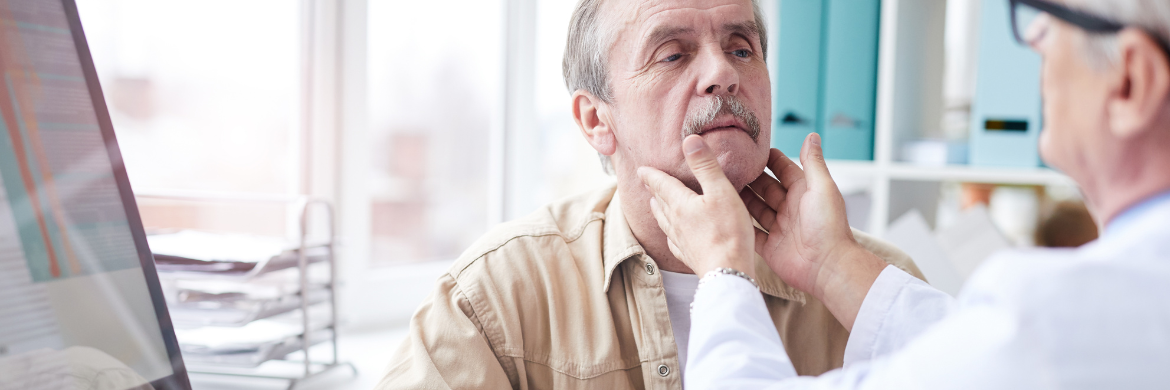
Oromandibular dystonia is a focal dystonia characterized by forceful contractions of the face, jaw, and/or tongue causing difficulty in opening and closing the mouth and often affecting chewing and speech. Another word used to describe dystonia of this kind is cranial dystonia.Cranial dystonia is a broad description for dystonia that affects any part of the head. Dystonia that affects the facial muscles and lips of musicians who play wind instruments is called embouchure dystonia. Dystonia that specifically affects the tongue is called lingual dystonia. Oromandibular dystonia may be primary or secondary.
Terms used to describe oromandibular dystonia include: orofaciomandibular dystonia; orofacial-buccal dystonia; jaw dystonia, tongue dystonia (lingual dystonia); embouchure dystonia; cranial dystonia; adult onset focal dystonia. When oromandibular dystonia occurs with blepharospasm, it may be referred to as Meige’s syndrome.
- Symptoms
Oromandibular dystonia may cause:
- Mouth to open involuntarily
- Jaw to clench shut
- Bottom jaw to shift toward one side or to the back
- Involuntary movements in the face and lips
- Involuntary movements in the tongue
Oromandibular dystonia should not be mistaken for temporomandibular joint disease (TMJ), which is an arthritic condition.
- Cause
Experts believe dystonia results from excessive signals arising from the brain that cause muscles to contract inappropriately. However, the exact reason why the brain delivers these excessive signals is not completely understood.
Oromandibular dystonia may be isolated (primary), meaning that it is the only present neurological disorder, with or without a family history. Cases of inherited oromandibular/cranial dystonia have been reported, often in conjunction with generalized dystonia. Oromandibular dystonia may also be acquired from secondary causes such as drug exposure or disorders such as Wilson’s disease. Drug-induced dystonia often first manifests as symptoms in the facial muscles.
- Diagnosis
Diagnosis of oromandibular dystonia is based on information from the individual and the physical and neurological examination. At this time, there is no test to confirm diagnosis of oromandibular dystonia, and in most cases assorted laboratory tests are normal.
Oromandibular dystonia should not be mistaken for temporomandibular joint disease (TMJ), which is an arthritic condition.
- Treatment
Treatment for oromandibular dystonia must be highly customized to the individual. Several oral medications have been studied to determine benefit for people with oromandibular dystonia. About one-third of people’s symptoms improve when treated with oral medications such as Klonapin® (clonazepam), Artane® (trihexyphenidyl), diazepam (Valium®), tetrabenezine, and/or Lioresal® baclofen).
Although the symptoms may vary from person to person, many people with oromandibular dystonia experience some reduction of spasms and improvement of chewing and speech after injection of botulinum neurotoxin into the masseter, temporalis, and lateral pterygoid muscles. The injections may be given with electromyography (EMG) or ultrasound guidance, and must be repeated every three to six months.
Botulinum neurotoxin injections tend to be most effective in jaw-closure dystonia, while treating jaw-opening dystonia may be more challenging. Botulinum neurotoxin injections may also be an option for lingual dystonia. Side effects such as swallowing difficulties, slurred speech, and excess weakness in injected muscles may occur. These side effects are usually temporary and relatively well tolerated.
Oromandibular dystonia may respond to the use of sensory tricks to temporarily reduce symptoms. For example, gently touching the lips or chin, chewing gum, talking, biting on a toothpick, wearing an orthodontic device or mouth guard, or placing a finger near an eye or underneath the chin may cause symptoms to subside temporarily. Different sensory tricks work for different people, and if a person finds a sensory trick that works, it usually continues to work.
Speech and swallowing therapy may lessen spasms, improve function, strengthen unaffected muscles, and facilitate easier speech and swallowing. Regular relaxation practices may benefit overall well being.
- What Type of Doctor Treats Oromandibular Dystonia?
The kind of doctor who is typically trained to diagnose and treat oromandibular dystonia is a neurologist who specializes in movement disorders. Ongoing treatment may require consultations with multiple specialties. For example, a neurologist or otolaryngologist (ear, nose, and throat specialist) may administer botulinum neurotoxin injections. A speech-language pathologist may provide speech and/or swallowing therapy.
- Does Oromandibular Dystonia Progress?
Individuals with oromandibular may first notice symptoms as a twitching or tightness in the jaw or face. Symptoms evolve over time and then typically stabilize. Symptoms are typically worsened by stress and may improve after sleep (though symptoms of acquired oromandibular dystonia may persist in sleep).
- Living with Oromandibular Dystonia
Living well with oromandibular dystonia is possible. The early stages of symptom onset, diagnosis, and seeking effective treatment are often the most challenging. The symptoms may vary from mild to severe, and symptoms often fluctuate from day to day. Symptoms may interfere with eating and drinking, and fatigue is common due to the exertion required to speak or maintain positioning of the jaw. Individuals may have to learn new ways to accomplish daily tasks.
Individuals living with oromandibular dystonia are strongly encouraged to:
• Seek out the best medical care
• Learn about dystonia and treatment options
• Develop a multi-layered support system of support groups, online resources, friends, and family
• Seek expert mental health professionals to diagnose and treat possible co-existing depression or anxiety disorders
• Investigate complementary therapies
• Get active within the dystonia community
Thank you to Dystonia Medical Research Foundation (USA) for allowing us to share this information. The DMRF is a 501(c)(3) non-profit organization dedicated to advancing research for improved dystonia treatments and ultimately a cure, promoting awareness, and supporting the well-being of affected individuals and families.
